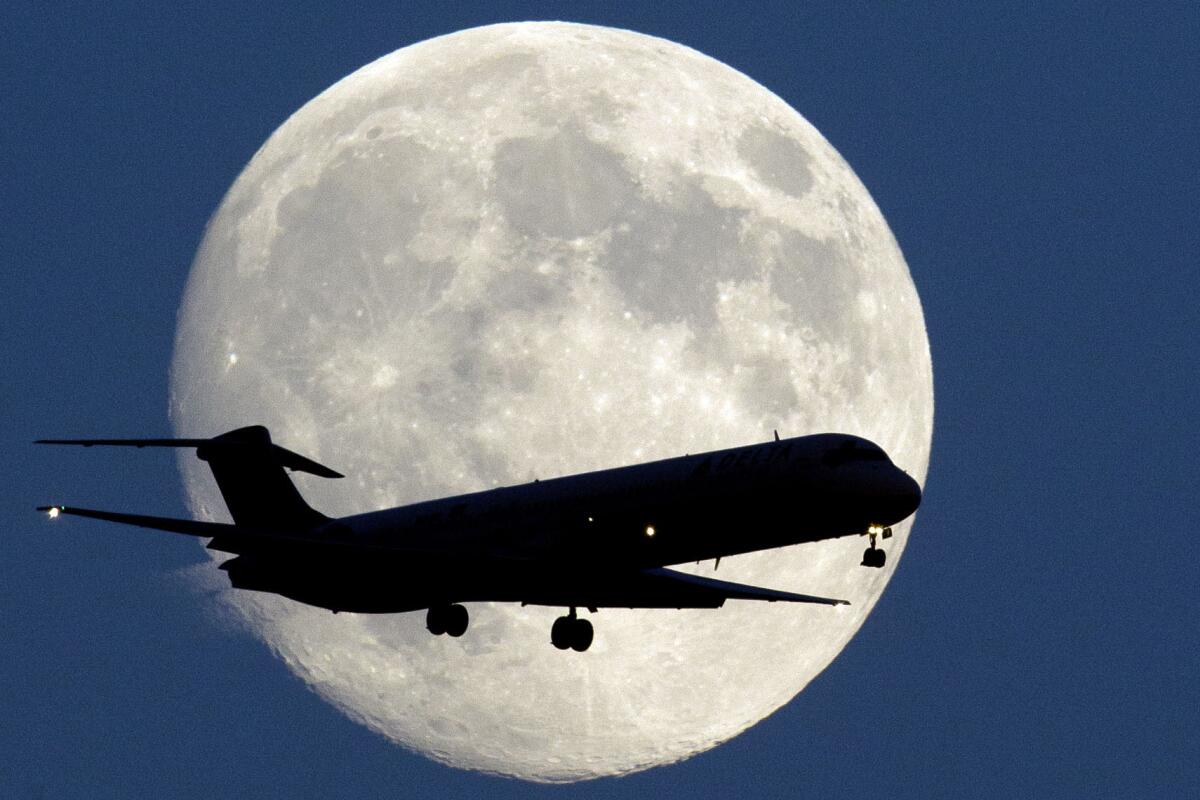Air travel, literature and its discontents

- Share via
Flying from Los Angeles to New York on Sunday, I sat next to a kid not too far from my son’s age who had eight drinks in the course of a five-hour flight. I wasn’t trying to keep count, but after a while, it became impossible not to do so — every time the flight attendant passed, he asked for another one.
At first, I was curious and later, annoyed; he didn’t look of age and, anyway, aren’t they supposed to cut you off at a certain point? But I didn’t say anything until he spilled a drink across the floor between us at the start of our descent.
Why not? In the first place, it wasn’t my responsibility; I try to operate whenever possible as what, in his novel “The Place of Dead Roads,” William S. Burroughs refers to as a Johnson: someone who “minds his own business. He is not a snoopy, self-righteous, trouble-making person.”
But even more, I was stirred by the recollection of various on-air altercations — three in the last few weeks — about reclining seats, in which flights were diverted and air marshals involved. I did not want to get into a similar dispute, be pulled off the plane, take my small problem and make it bigger, make it everyone’s.
Better to keep my mouth shut, to be a Johnson again, albeit in a different way — but it also made me wonder: Where is the literature that deals with this new landscape of flying, the interplay (or tension) between passengers, the pressures that make air travel such an unpleasant chore?
Flying has been the subject of plenty of writing: I think of Walter Kirn’s “Up in the Air,” Jonathan Miles’ “Dear American Airlines,” Alain de Botton’s “A Week at the Airport,” Arthur Hailey’s “Airport” or “Runway Zero Eight.” In “The Global Soul,” Pico Iyer connects air travel, shopping malls, hotel life into a kind of metaphor for the displacements of (post-)modern living; Erica Jong’s legendary “Fear of Flying” begins with a different sort of displacement; “There were 117 psychoanalysts on the Pan Am flight to Vienna,” she writes, “and I’d been treated by at least six of them.”
And yet, for the most part, these books resist the tensions, the degradations, of contemporary air travel in favor of more existential concerns. That’s fine — I’m a fan of existential concerns — but what about the way we live? I can’t be the only person who scans my fellow passengers, wondering who is undercover, who is not. I’m reminded of the scene in the movie “Bridesmaids,” in which Kristen Wiig is taken down by an air marshal after getting loaded and disruptive.
I wasn’t worried about that so much on my flight; my seatmate worked through his drinks quietly, doggedly. But I did think a bit about shared space, the intersection of the public and the private, which is always, to some extent, the subject of literature. How do we carry ourselves in the world? What is the feeling of our moment, the sensation of our particular place and time?
Such questions animate Sherman Alexie’s remarkable story “Flight Patterns,” in which, during a ride to the airport, a Native American businessman and an Ethiopian cab driver share a discomforting series of revelations about race and culture in a post- 9/11 world, but what happens when we get on the plane?
For me, it is often a matter of discomfort, in life if (not quite yet) in literature.
Twitter: @davidulin
More to Read
Sign up for our Book Club newsletter
Get the latest news, events and more from the Los Angeles Times Book Club, and help us get L.A. reading and talking.
You may occasionally receive promotional content from the Los Angeles Times.











